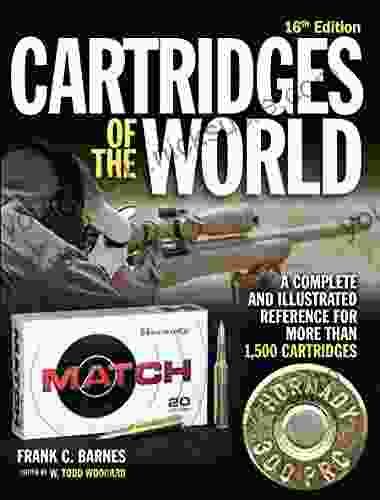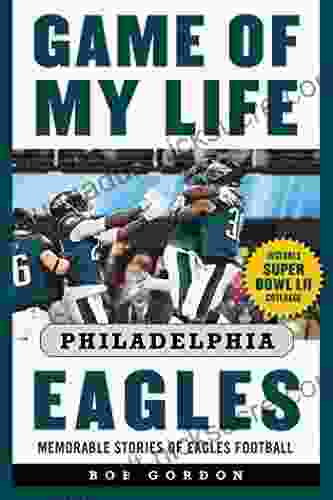Why Men Fight: A Comprehensive Exploration of the Causes and Appeal of Violence in Fighting Sports

Fighting, as an expression of physical aggression and competition, has been an integral part of human history. From ancient gladiatorial contests to modern-day combat sports like boxing, MMA, and wrestling, the spectacle of men engaged in violent confrontations has captivated audiences for centuries. But why do men fight, and why do we find it so compelling to watch? This article aims to shed light on the complex interplay of biological, psychological, and social factors that drive these confrontations and their enduring appeal.
Biological Factors: The Role of Testosterone and Aggression
Research suggests that biological factors, particularly the hormone testosterone, play a significant role in aggressive behavior and the propensity for fighting. Testosterone, primarily produced in the testes of men, is known to increase levels of aggression and dominance, which may contribute to the drive to engage in physical confrontations. Studies have shown that individuals with higher testosterone levels exhibit increased levels of competitive behavior and a greater likelihood of engaging in aggressive acts.
4.7 out of 5
| Language | : | English |
| File size | : | 17874 KB |
| Text-to-Speech | : | Enabled |
| Screen Reader | : | Supported |
| Enhanced typesetting | : | Enabled |
| Word Wise | : | Enabled |
| Print length | : | 245 pages |
Psychological Factors: Dominance, Status, and Catharsis
Beyond biological factors, psychological motivations also drive men's inclination to fight. The desire for dominance and status is a powerful motivator in human behavior, and fighting can serve as a means of establishing or asserting one's superiority over others. In many cultures, physical strength and fighting ability have been associated with leadership, prestige, and social standing. Fighting can also provide a sense of catharsis, releasing pent-up aggression and emotions in a controlled and sanctioned environment. For some individuals, engaging in combat sports can serve as a healthy outlet for expressing and managing their aggressive impulses.
Cultural Influences: The Impact of Socialization and Norms
Cultural factors also play a significant role in shaping attitudes towards fighting and its perceived acceptability. In societies where violence is more prevalent or tolerated, fighting may be seen as a legitimate way of resolving conflicts or demonstrating masculinity. Socialization processes, particularly during childhood and adolescence, can influence individuals' views on fighting and their likelihood of engaging in it. Exposure to violence in the media, video games, and other forms of popular culture can further reinforce the notion that fighting is an acceptable or even desirable behavior for men.
Evolutionary Perspective: Fighting as an Adaptive Trait
From an evolutionary perspective, fighting may have been an adaptive trait that contributed to the survival of our species. In prehistoric times, physical confrontations may have been necessary for obtaining resources, defending territory, and protecting offspring. The ability to fight effectively may have conferred an advantage in terms of survival and reproductive success. This evolutionary legacy may contribute to the enduring fascination with fighting and its innate appeal to our primal instincts.
The Appeal of Fighting Sports: Spectacle, Entertainment, and Escapism
Beyond the motivations that drive men to fight, the reasons why we find it captivating as spectators are equally complex. Fighting sports offer a unique spectacle that combines elements of physical prowess, violence, and suspense. The thrill of witnessing two skilled opponents engage in a contest of strength, skill, and endurance can be exhilarating for many viewers. The element of danger and uncertainty adds to the excitement, as unpredictable outcomes and the potential for serious injury are ever-present.
For some spectators, fighting sports provide an escape from the mundane realities of everyday life. They offer an opportunity to vicariously experience the thrill and excitement of combat without the risks associated with actual participation. The spectacle of violence can be cathartic, providing an outlet for pent-up aggression and emotions. Additionally, fighting sports have become a form of entertainment, with major events drawing large audiences and generating substantial revenue. The promotion and marketing of these events often emphasize the violence and physicality of the sport, further contributing to its appeal.
The reasons why men fight and why we find it captivating to watch are multifaceted and complex. Biological factors, such as testosterone, play a role in driving aggressive behavior. Psychological motivations, including the desire for dominance, status, and catharsis, further contribute to the appeal of fighting. Cultural influences and socialization processes shape attitudes towards fighting and its perceived acceptability. Evolutionary perspectives suggest that fighting may have been an adaptive trait that has left a legacy in our primal instincts. Ultimately, the spectacle of fighting sports provides a unique combination of excitement, entertainment, and escapism that continues to captivate audiences worldwide. Understanding the complex interplay of factors that drive fighting and its appeal can help us better appreciate this enduring aspect of human behavior and its cultural significance.
4.7 out of 5
| Language | : | English |
| File size | : | 17874 KB |
| Text-to-Speech | : | Enabled |
| Screen Reader | : | Supported |
| Enhanced typesetting | : | Enabled |
| Word Wise | : | Enabled |
| Print length | : | 245 pages |
Do you want to contribute by writing guest posts on this blog?
Please contact us and send us a resume of previous articles that you have written.
 Fiction
Fiction Non Fiction
Non Fiction Romance
Romance Mystery
Mystery Thriller
Thriller SciFi
SciFi Fantasy
Fantasy Horror
Horror Biography
Biography Selfhelp
Selfhelp Business
Business History
History Classics
Classics Poetry
Poetry Childrens
Childrens Young Adult
Young Adult Educational
Educational Cooking
Cooking Travel
Travel Lifestyle
Lifestyle Spirituality
Spirituality Health
Health Fitness
Fitness Technology
Technology Science
Science Arts
Arts Crafts
Crafts DIY
DIY Gardening
Gardening Petcare
Petcare Lin Wellford
Lin Wellford Nicholas D Kristof
Nicholas D Kristof Keylee C Hargis
Keylee C Hargis Kenneth R Ginsburg
Kenneth R Ginsburg James Quinn
James Quinn Tina Nelson
Tina Nelson David Kinney
David Kinney Mitch Horowitz
Mitch Horowitz Baby Professor
Baby Professor Sam Bleakley
Sam Bleakley Jodi Shabazz
Jodi Shabazz Kathryn Miles
Kathryn Miles Tirzah Price
Tirzah Price Daniel Friedmann
Daniel Friedmann Gerard Siggins
Gerard Siggins Emily Souder
Emily Souder J D Swanson
J D Swanson Dawn Griffiths
Dawn Griffiths Chris Santella
Chris Santella Jodi Picoult
Jodi Picoult Kathy Hoopmann
Kathy Hoopmann Mark W Steege
Mark W Steege Madeleine Roux
Madeleine Roux Rawdon Wyatt
Rawdon Wyatt Devaki Lakshmi
Devaki Lakshmi Mary Pipher
Mary Pipher James M Johnston
James M Johnston Tom Allen
Tom Allen Christian Heath
Christian Heath Chuck Weikert
Chuck Weikert Otto Rahn
Otto Rahn Jennifer Bohnet
Jennifer Bohnet Joseph Phillips
Joseph Phillips Yvonne Choquet Bruhat
Yvonne Choquet Bruhat Rebecca Hemmings
Rebecca Hemmings Howard Davis
Howard Davis Karl E Peace
Karl E Peace Michael V Uschan
Michael V Uschan Mark Shepherd
Mark Shepherd Rod Powers
Rod Powers Jeffrey Thurston
Jeffrey Thurston Dean Beaumont
Dean Beaumont Sandy Tolan
Sandy Tolan Bob Gordon
Bob Gordon Stewart Shapiro
Stewart Shapiro Kathy Freston
Kathy Freston Samuel B Green
Samuel B Green Mercedes Pollmeier
Mercedes Pollmeier Chef Maggie Chow
Chef Maggie Chow Chip Heath
Chip Heath Stuart Lawrence
Stuart Lawrence Serena B Miller
Serena B Miller Bernd Heinrich
Bernd Heinrich Johnson Egonmwan
Johnson Egonmwan Bret A Moore
Bret A Moore Judea Pearl
Judea Pearl Tristan Higbee
Tristan Higbee Dave Gray
Dave Gray Christina Reese
Christina Reese Richard Hibshman
Richard Hibshman Karen Sternheimer
Karen Sternheimer Wynne Foster
Wynne Foster John Geiger
John Geiger Adam Skolnick
Adam Skolnick Nathaniel Rich
Nathaniel Rich Ryan Beck
Ryan Beck Phil Burt
Phil Burt Seth Lloyd
Seth Lloyd Arlin Smith
Arlin Smith Donna Helen Crisp Jd Msn Rn Pmhcns Bc
Donna Helen Crisp Jd Msn Rn Pmhcns Bc Robin Yocum
Robin Yocum Peter Gibson
Peter Gibson Avinash Navlani
Avinash Navlani Andy Peloquin
Andy Peloquin S L Macgregor Mathers
S L Macgregor Mathers Sir Edmund Hillary
Sir Edmund Hillary Matthew D Dewar
Matthew D Dewar T L Payne
T L Payne Walter Beede
Walter Beede George Johnson
George Johnson Michael Driscoll
Michael Driscoll Connie Schultz
Connie Schultz Lidia Bastianich
Lidia Bastianich Shreya Ramachandran
Shreya Ramachandran Manik Joshi
Manik Joshi William D Lopez
William D Lopez Third Edition Kindle Edition
Third Edition Kindle Edition Keith Elliot Greenberg
Keith Elliot Greenberg Wayne Mcghie
Wayne Mcghie Kevin Hunter
Kevin Hunter Roger Craig
Roger Craig Jessica Wolstenholm
Jessica Wolstenholm L S Boos
L S Boos Rebecca Boggs Roberts
Rebecca Boggs Roberts Robyn Harding
Robyn Harding Teresa Parker
Teresa Parker Thais Nye Derich
Thais Nye Derich Rick Vaive
Rick Vaive Tj Faultz
Tj Faultz Dan Heath
Dan Heath Kim West
Kim West Lucy Postgate
Lucy Postgate Ariel Henley
Ariel Henley Kristina Statler
Kristina Statler Fredrik Backman
Fredrik Backman Bob Clouser
Bob Clouser Kristen Jervis Cacka
Kristen Jervis Cacka Marie Myung Ok Lee
Marie Myung Ok Lee Christopher Nyerges
Christopher Nyerges Alessio Mangoni
Alessio Mangoni Jordan Summers
Jordan Summers Joyce Yang
Joyce Yang Gillian Price
Gillian Price Yuu Tanaka
Yuu Tanaka Viviana Altuve
Viviana Altuve Troy A Hill
Troy A Hill Robyn Ryle
Robyn Ryle Kyle Graves
Kyle Graves Emily Nielson
Emily Nielson Ron Douglas
Ron Douglas Elly Molina
Elly Molina Jules Brown
Jules Brown Miles Olson
Miles Olson Ellen Frank
Ellen Frank Tara Sim
Tara Sim Caryl Say
Caryl Say Rufus Estes
Rufus Estes David C Keehn
David C Keehn Laura Hillman
Laura Hillman Pete Sampras
Pete Sampras Matt Vincent
Matt Vincent Danil Zburivsky
Danil Zburivsky Steve Hindman
Steve Hindman Florian Freistetter
Florian Freistetter Lois A Ritter
Lois A Ritter Jenny Smith
Jenny Smith Richard Bate
Richard Bate Angela Leslee
Angela Leslee Tiara Mcclure
Tiara Mcclure Murtaza Haider
Murtaza Haider Muako Maepa
Muako Maepa Robert Zubek
Robert Zubek Natalie Rhodes
Natalie Rhodes Jerry Toner
Jerry Toner Schoolhouse Heaven
Schoolhouse Heaven Ted Sandling
Ted Sandling George E Hein
George E Hein Robert E Stake
Robert E Stake Tim Hannigan
Tim Hannigan Andrea Lankford
Andrea Lankford Mark Kernion
Mark Kernion Ashley Rickards
Ashley Rickards Angel Millar
Angel Millar Cap N Fatty Goodlander
Cap N Fatty Goodlander Julia Reed
Julia Reed Dennis Rainey
Dennis Rainey M J Fievre
M J Fievre Lee Cronk
Lee Cronk Angela Thayer
Angela Thayer Rachel Kowert
Rachel Kowert Stephen Cheney
Stephen Cheney Elizabeth Kaledin
Elizabeth Kaledin Leonard Lueras
Leonard Lueras Robert Dudley
Robert Dudley Jane M Healy
Jane M Healy Tim Larkin
Tim Larkin Andy Farrell
Andy Farrell Jeremy Klaff
Jeremy Klaff Patrick Pickens
Patrick Pickens Jeff Mach
Jeff Mach Laura Bogen
Laura Bogen Bradley T Erford
Bradley T Erford Kelly Corrigan
Kelly Corrigan Linda Sivertsen
Linda Sivertsen Tom Chatfield
Tom Chatfield Jay Matthews
Jay Matthews Ryan Bow
Ryan Bow Jamie Kuykendall
Jamie Kuykendall Ryan D Agostino
Ryan D Agostino Rafael Gordillo Naranjo
Rafael Gordillo Naranjo Frederick Aardema
Frederick Aardema Shalabh Aggarwal
Shalabh Aggarwal T R Fehrenbach
T R Fehrenbach Patrick Ejeke
Patrick Ejeke Angelo Chiari
Angelo Chiari Emma Dalton
Emma Dalton Ruby Lang
Ruby Lang Eli Wilson
Eli Wilson Guy Evans
Guy Evans Petros Efthymiou
Petros Efthymiou Joseph Mazur
Joseph Mazur Peter Townsend
Peter Townsend Janet Menzies
Janet Menzies Jay Griffiths
Jay Griffiths Kat Anderson
Kat Anderson Roland A Boucher
Roland A Boucher Angela Eckhoff
Angela Eckhoff Cynthia Nims
Cynthia Nims Nicholas Jubber
Nicholas Jubber Karen Elliott House
Karen Elliott House Karl Beecher
Karl Beecher Dave Duncan
Dave Duncan Christina Hillsberg
Christina Hillsberg Milton Roth
Milton Roth Robin Ray Green
Robin Ray Green Warren St John
Warren St John Violet White
Violet White Angela Stancar Johnson
Angela Stancar Johnson Stephen Jungmann
Stephen Jungmann Louis Martin
Louis Martin Jenna Blough
Jenna Blough Mark Rosenman
Mark Rosenman Tigran Bagdasaryan
Tigran Bagdasaryan Andy Mitchell
Andy Mitchell George Noory
George Noory Eric Schmitz
Eric Schmitz D M Davis
D M Davis Diana Winston
Diana Winston David Herres
David Herres Hourly History
Hourly History Nicole Smith
Nicole Smith Shane O Mara
Shane O Mara Howell Raines
Howell Raines Joe Berardi
Joe Berardi John B Nici
John B Nici Jenna Helwig
Jenna Helwig Jessica Nordell
Jessica Nordell Rodney Paul
Rodney Paul Joy Williams
Joy Williams Tim Macwelch
Tim Macwelch Elizabeth Hunter
Elizabeth Hunter Carlos Acevedo
Carlos Acevedo Alex Wolf
Alex Wolf Kim Foley Mackinnon
Kim Foley Mackinnon Wendy Rosenoff
Wendy Rosenoff Mark Synnott
Mark Synnott Mike Chambers
Mike Chambers Ingrid S Clay
Ingrid S Clay Jorge Ramos Mizael
Jorge Ramos Mizael Andy Crowe
Andy Crowe Rachel Connelly
Rachel Connelly Tovah Feldshuh
Tovah Feldshuh Lynn Lyons
Lynn Lyons Kevin J Gaston
Kevin J Gaston William E Hearn
William E Hearn Angelo Lowery
Angelo Lowery Jessica Jung
Jessica Jung Jonah Lehrer
Jonah Lehrer John Samuel Barnett
John Samuel Barnett Scott Stillman
Scott Stillman Gary B Meisner
Gary B Meisner Frank Deford
Frank Deford Elizabeth Foss
Elizabeth Foss Aaron Wilson
Aaron Wilson Erin Moulton
Erin Moulton George Megre
George Megre Marilyn Burgos
Marilyn Burgos Dhonielle Clayton
Dhonielle Clayton Martin Volken
Martin Volken Bradley Charbonneau
Bradley Charbonneau Rashaun Johnson
Rashaun Johnson David E Jones
David E Jones Angela C Wu
Angela C Wu Raynor Winn
Raynor Winn Robert Lindsay
Robert Lindsay Sandra Steingraber
Sandra Steingraber Humberto G Garcia
Humberto G Garcia Angelina J Steffort
Angelina J Steffort Richard L Sites
Richard L Sites Ben Campbell
Ben Campbell Jim Posewitz
Jim Posewitz Margaret M Quinlan
Margaret M Quinlan Leanne Ely
Leanne Ely Dan Ariely
Dan Ariely Thomas Golf
Thomas Golf Sharon Strand Ellison
Sharon Strand Ellison Paul Cobley
Paul Cobley Robyn Wideman
Robyn Wideman Carlo Rovelli
Carlo Rovelli Donna Mott
Donna Mott Margaret Jordan Halter
Margaret Jordan Halter Richard G Brown
Richard G Brown Tim O Connor
Tim O Connor Rosie Daley
Rosie Daley Ben Ehrenreich
Ben Ehrenreich Cory Mortensen
Cory Mortensen Stefanie K Johnson
Stefanie K Johnson Ben Bleiweiss
Ben Bleiweiss Michael Anthony
Michael Anthony Charlotte Klaar Phd
Charlotte Klaar Phd Afra J Zomorodian
Afra J Zomorodian Margaret Visser
Margaret Visser Catherine Mccord
Catherine Mccord Mark Lester
Mark Lester Scott Alan Johnston
Scott Alan Johnston Mark Wells
Mark Wells Tania N Shah
Tania N Shah Massimo Florio
Massimo Florio Ashley P Martin
Ashley P Martin Lutz Hanseroth
Lutz Hanseroth Capn Fatty Goodlander
Capn Fatty Goodlander Ken Dryden
Ken Dryden Daddilife Books
Daddilife Books W Todd Woodard
W Todd Woodard Jim Saccomano
Jim Saccomano John Sonmez
John Sonmez Judith Hoare
Judith Hoare K Moriyasu
K Moriyasu Bob Swope
Bob Swope Rachel Hutt Phd
Rachel Hutt Phd Patrick M Lencioni
Patrick M Lencioni Nick Bradley
Nick Bradley Tom Dymond
Tom Dymond United States Government Us Army
United States Government Us Army David Graeber
David Graeber Sam Fury
Sam Fury Diana Nyad
Diana Nyad Alberta Hawse
Alberta Hawse Oliver Burkeman
Oliver Burkeman Mark Verstegen
Mark Verstegen Rob Willson
Rob Willson Jeff Fleischer
Jeff Fleischer Jeanne Godfrey
Jeanne Godfrey Samir P Desai
Samir P Desai Dave Smith
Dave Smith Nikki Ace
Nikki Ace Stephen Rea
Stephen Rea Jon Ronson
Jon Ronson Greg Prato
Greg Prato Hajime Isayama
Hajime Isayama Michele Borba
Michele Borba Belinda Norton
Belinda Norton Andy Puddicombe
Andy Puddicombe Scott Turner
Scott Turner Chanel Craft Tanner
Chanel Craft Tanner Andy Dowsett
Andy Dowsett Ray Walker
Ray Walker Cheryl Alkon
Cheryl Alkon Forrest Maready
Forrest Maready Pete Dunne
Pete Dunne Joshua Clark
Joshua Clark Kent David Kelly
Kent David Kelly Irene Gut Opdyke
Irene Gut Opdyke G K Derosa
G K Derosa Jason Hogan
Jason Hogan Joan Jacobs Brumberg
Joan Jacobs Brumberg Stacy Mccullough
Stacy Mccullough John C Maxwell
John C Maxwell Latonya J Trotter
Latonya J Trotter Angela Smith
Angela Smith Ed Stafford
Ed Stafford Miranda Green
Miranda Green Bill Schneider
Bill Schneider Donald N Yates
Donald N Yates Lindsay Ford
Lindsay Ford Thomas Gilovich
Thomas Gilovich Lisa Marie Mercer
Lisa Marie Mercer Anna Rashbrook
Anna Rashbrook Richard Lemaster
Richard Lemaster Mometrix
Mometrix Caspar Melville
Caspar Melville Robb Manning
Robb Manning Ruth Benedict
Ruth Benedict Susan Burton
Susan Burton Lawrence Goldstone
Lawrence Goldstone Gregory J Davenport
Gregory J Davenport Shenila Khoja Moolji
Shenila Khoja Moolji Rebecca Serle
Rebecca Serle Jo May
Jo May Keith Crowley
Keith Crowley Tim Thayne
Tim Thayne Mark Remy
Mark Remy Mtg Editorial Board
Mtg Editorial Board Rodney Castleden
Rodney Castleden Rebecca P Cohen
Rebecca P Cohen Christopher O Kennon
Christopher O Kennon Brian Cain
Brian Cain Tanya Lee Stone
Tanya Lee Stone Mirabai Starr
Mirabai Starr Beth A Leonard
Beth A Leonard Lisa Preston
Lisa Preston Eugene P Northrop
Eugene P Northrop Kate Le Roux
Kate Le Roux Dwight E Neuenschwander
Dwight E Neuenschwander Jonathan Gottschall
Jonathan Gottschall Peter Finch
Peter Finch Sabbithry Persad Mba
Sabbithry Persad Mba Mandee Heller Adler
Mandee Heller Adler Joel J Lerner
Joel J Lerner Andy Jurinko
Andy Jurinko Siena Cherson Siegel
Siena Cherson Siegel Carol Ann Gillespie
Carol Ann Gillespie David Goodman
David Goodman Robin Benway
Robin Benway Jim Prime
Jim Prime Liv Ryan
Liv Ryan Harold S Koplewicz
Harold S Koplewicz Angel Burns
Angel Burns Colby Coombs
Colby Coombs Mark J Musser
Mark J Musser Marie Brennan
Marie Brennan Marc Charles
Marc Charles Deborah Wall
Deborah Wall Jeffrey Bernstein
Jeffrey Bernstein Erich Fromm
Erich Fromm Donald R Prothero
Donald R Prothero Rebecca Solnit
Rebecca Solnit Germano Dalcielo
Germano Dalcielo Dr Eva Beaulieu
Dr Eva Beaulieu Eliot Schrefer
Eliot Schrefer Barak Ariel
Barak Ariel Andy Tyson
Andy Tyson Joe Peta
Joe Peta Meg Long
Meg Long Ellen J Langer
Ellen J Langer Stephen Lynch
Stephen Lynch Charney Herst
Charney Herst Richard Lee Byers
Richard Lee Byers R E Burrillo
R E Burrillo Douglas Henderson Jr
Douglas Henderson Jr Christian Wiggins
Christian Wiggins Harry Fairhead
Harry Fairhead Rebecca Eanes
Rebecca Eanes Stefan Hunziker
Stefan Hunziker William Ayers
William Ayers Kevin Thomas
Kevin Thomas Jeffrey Lee
Jeffrey Lee Nicholas Epley
Nicholas Epley Neil Hawkesford
Neil Hawkesford Israelin Shockness
Israelin Shockness Katrina Cope
Katrina Cope Cate Tiernan
Cate Tiernan Derek M Steinbacher
Derek M Steinbacher Stephanie Land
Stephanie Land Richard A Muller
Richard A Muller Sylvester Nemes
Sylvester Nemes Stephen Grossberg
Stephen Grossberg Jeffrey T Richelson
Jeffrey T Richelson Angeline Boulley
Angeline Boulley Barry Pickthall
Barry Pickthall Kristen S Kurland
Kristen S Kurland Madison Lee
Madison Lee Lynn Palm
Lynn Palm Tea Rozman Clark
Tea Rozman Clark Michael Tomasello
Michael Tomasello Kim Dragoner
Kim Dragoner Andy Schell
Andy Schell Ron Jeffries
Ron Jeffries Johnny Molloy
Johnny Molloy Chris Chelios
Chris Chelios Kari Marie Norgaard
Kari Marie Norgaard Neveen Musa
Neveen Musa Scott Meyer
Scott Meyer Warren Sande
Warren Sande Judith S Beck
Judith S Beck Tovar Cerulli
Tovar Cerulli Robert Urban
Robert Urban Emiko Jean
Emiko Jean Angelo Tropea
Angelo Tropea William Bryant Logan
William Bryant Logan Robert Kirk
Robert Kirk
Light bulbAdvertise smarter! Our strategic ad space ensures maximum exposure. Reserve your spot today!

 DeShawn PowellNurse Practitioners: Essential Healthcare Providers Who Address Critical...
DeShawn PowellNurse Practitioners: Essential Healthcare Providers Who Address Critical...
 Salman RushdieReborn Throne: Shattered Kingdom - A Realm of Enchanting Storytelling and...
Salman RushdieReborn Throne: Shattered Kingdom - A Realm of Enchanting Storytelling and...
 Grant HayesDiscover the Comprehensive Traveler's Guide to Unlocking the Hidden Gems of...
Grant HayesDiscover the Comprehensive Traveler's Guide to Unlocking the Hidden Gems of... Casey BellFollow ·17.4k
Casey BellFollow ·17.4k Felix CarterFollow ·8k
Felix CarterFollow ·8k Samuel Taylor ColeridgeFollow ·17.9k
Samuel Taylor ColeridgeFollow ·17.9k Warren BellFollow ·7.1k
Warren BellFollow ·7.1k Ethan MitchellFollow ·12.1k
Ethan MitchellFollow ·12.1k Christian BarnesFollow ·5.4k
Christian BarnesFollow ·5.4k Mario SimmonsFollow ·9.8k
Mario SimmonsFollow ·9.8k Jeffrey CoxFollow ·3.5k
Jeffrey CoxFollow ·3.5k

 Devon Mitchell
Devon MitchellDelve into the Comprehensive World of Cartridges: A...
In the realm of firearms, cartridges stand...

 Joseph Conrad
Joseph ConradTales From The San Francisco 49ers Sideline: A Look...
The San Francisco 49ers are one of the most...

 Ervin Bell
Ervin BellArcGIS Desktop 10: A Comprehensive GIS Tutorial for...
Geographic information...

 Reed Mitchell
Reed MitchellPhysiology Pretest Self Assessment And Review 14th...
Accurately gauge your physiology knowledge and...

 Devin Ross
Devin RossLost At Sea: The Unbelievable True Story of the Jon...
In 2009, journalist Jon Ronson set out to...

 Shane Blair
Shane BlairModes of Thinking for Qualitative Data Analysis
Qualitative data analysis is a complex...
4.7 out of 5
| Language | : | English |
| File size | : | 17874 KB |
| Text-to-Speech | : | Enabled |
| Screen Reader | : | Supported |
| Enhanced typesetting | : | Enabled |
| Word Wise | : | Enabled |
| Print length | : | 245 pages |






